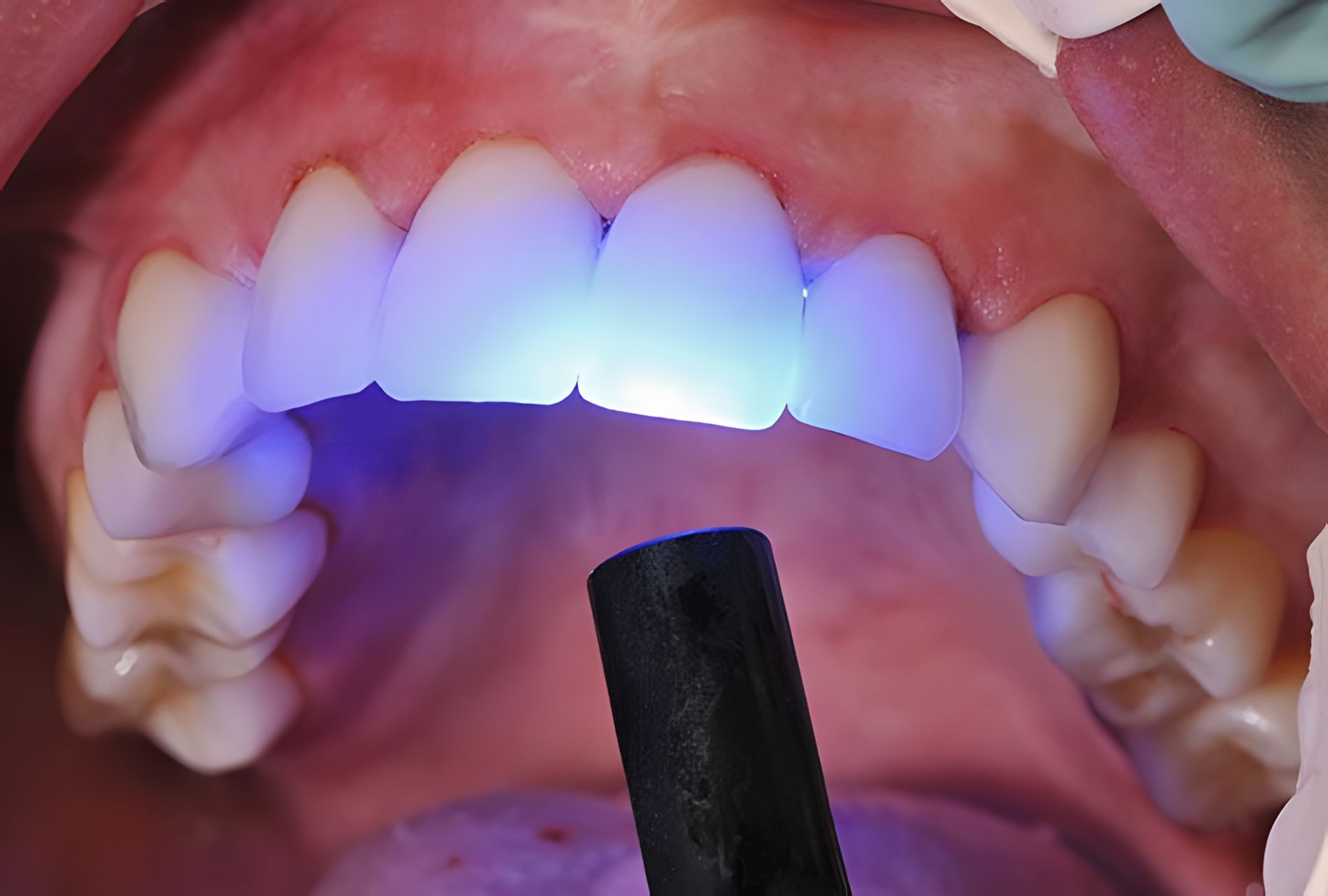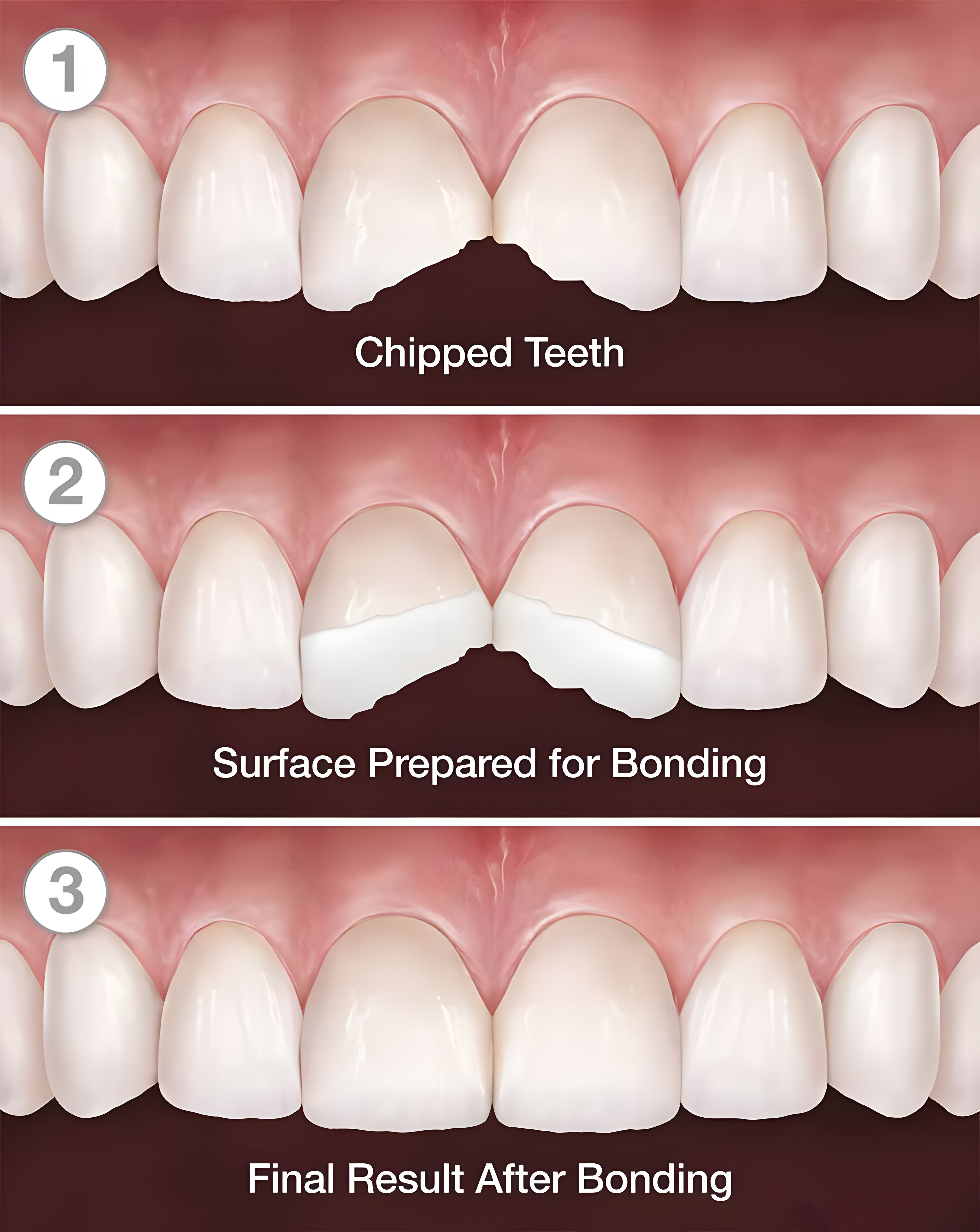If you are looking to improve your smile, you may have heard of composite bonding. It is a dental procedure that can help fix chipped, cracked, or discolored teeth, among other dental issues. Composite bonding is a non-invasive and cost-effective way to improve the appearance of your teeth, but what is it exactly? In this article, we will explore everything you need to know about composite bonding, from its benefits and risks to the process and aftercare.

WHAT IS COMPOSITE BONDING?

Composite bonding is a cosmetic dental procedure that involves using a tooth-colored resin to reshape or restore your teeth. It is a relatively simple and quick process that can be done in a single visit to your dentist. The resin used in composite bonding is made of a mixture of plastic and glass, which is applied to your teeth in layers and then hardened with a special light. Once the composite resin is set, your dentist will sculpt and polish it to match the shape and color of your surrounding teeth.
Composite bonding can be used to fix a range of dental problems, including:
- Cracks or chips in teeth
- Discolored or stained teeth
- Uneven teeth
- Gaps between teeth
- Misshapen teeth
- Decayed teeth
BENEFITS OF COMPOSITE BONDING
There are several benefits to getting composite bonding. Here are a few:
- Non-invasive: Unlike other cosmetic dental procedures like veneers, composite bonding does not require removing any tooth enamel.
- Quick: Composite bonding can be completed in a single visit to your dentist, usually taking no more than an hour.
- Cost-effective: Compared to other dental procedures, composite bonding is relatively inexpensive.
- Aesthetic: Composite resin is tooth-colored, making it look natural and blend in with your surrounding teeth.
- Versatile: Composite bonding can be used to fix a range of dental problems, as mentioned above.

RISKS OF COMPOSITE BONDING
While composite bonding is a safe and relatively low-risk dental procedure, there are a few risks to be aware of. These include:
- Sensitivity: After the procedure, you may experience sensitivity to hot and cold temperatures, but this usually goes away within a few days.
- Staining: Composite resin can stain over time, so it's important to avoid certain foods and drinks that may cause staining, such as coffee, tea, and red wine.
- Chipping: Composite resin is not as strong as your natural tooth enamel, so it can chip or break if you bite down on something hard.
- Decay: If the composite resin is not properly cared for, it can cause decay to your natural tooth underneath.
THE COMPOSITE BONDING PROCESS
Now that you know what composite bonding is and its benefits and risks, let's take a closer look at the process.
STEP 1: CONSULTATION
The first step is to schedule a consultation with your dentist to discuss whether composite bonding is right for you. During this appointment, your dentist will examine your teeth and discuss your goals and expectations for the procedure.
STEP 2: PREPARATION
If you and your dentist decide that composite bonding is the right choice for you, the next step is to prepare your tooth for the bonding process. Your dentist will start by cleaning your teeth and then roughening the surface of the tooth to be bonded. This is done to help the composite resin adhere to the tooth.
STEP 3: APPLYING THE COMPOSITE RESIN
Once your tooth is prepared, your dentist will apply the composite resin to the tooth in layers. Each layer is hardened with a special light before the next layer is applied. Your dentist will sculpt and shape the composite resin to match the shape and color of your surrounding teeth.
STEP 4: POLISHING
Once the composite resin has been applied and shaped, it needs to be hardened with a special light. This process is called curing, and it typically takes about 30-60 seconds. Once the resin is cured, your dentist will polish it to give it a natural shine and finish.
CONCLUSION:
Composite bonding is a versatile and effective cosmetic dental procedure that can help improve the appearance of your teeth. It is a cost-effective alternative to other cosmetic dental procedures and can be done in a single visit. With proper care and maintenance, composite bonding can last for several years and can help you achieve the smile you've always wanted. If you are interested in composite bonding, talk to your dentist to see if it is the right option for you.
Frequently Asked Questions (FAQs)
What is composite bonding?
Composite bonding is a non-invasive dental procedure offered to improve the appearance of decayed, chipped, fractured, or discoloured front teeth. A tooth-coloured resin material is used to reshape or improve the colour of the existing teeth.
What are the benefits of composite bonding?
The benefits of composite bonding include being a safe, reliable, and painless procedure, with no tooth structure removal necessary (unless the decay is involved), and no drilling or anaesthesia required.
How is composite bonding performed?
Composite bonding is performed in 8 steps: clinical examination, administration of local anaesthetic (if needed), surface abrasion, shaping (if needed), coating, application of bonding agent, hardening, and trimming and polishing.
Is composite bonding painful?
No, composite bonding is a completely painless procedure as long as there is no deep decay involved.
Is tooth structure removal necessary for composite bonding?
No, unless there is decay involved, composite bonding does not require the removal of any tooth structure.






